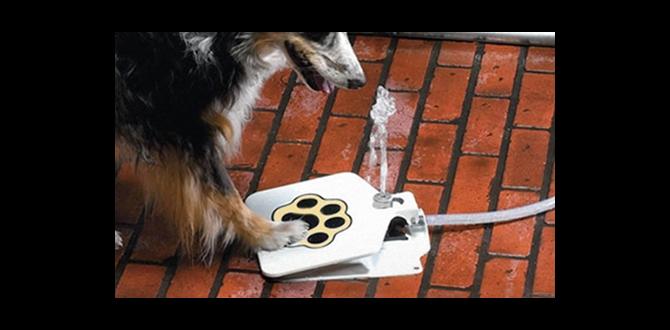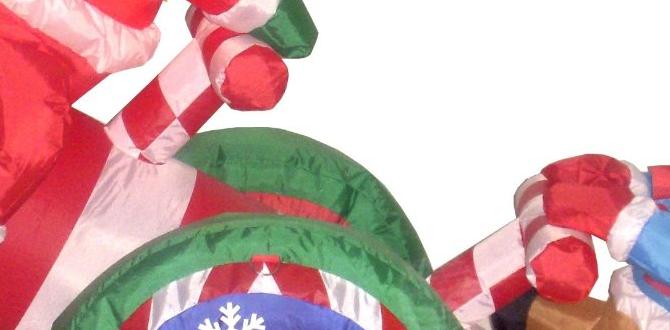Quick Summary:
To care for a jade plant indoors, provide bright, indirect sunlight, water only when the soil is dry, use well-draining potting mix, and maintain moderate room temperatures. Jade plants are forgiving and rewarding, making them perfect for beginners.
Welcome, green thumbs, to EcoPatchy! We’re diving into the wonderful world of indoor plants, and today we’re shining a spotlight on a true gem: the Jade Plant (Crassula ovata). If you’ve ever admired those beautifully plump, glossy leaves and thought, “I could never keep a plant that nice alive,” think again! Jade plants are surprisingly resilient and incredibly rewarding, making them a fantastic choice for anyone new to the plant parent club. Many beginners find themselves a little intimidated by plant care, worried about overwatering, underwatering, or finding the perfect light. But don’t fret! This guide is designed to demystify jade plant care, offering simple, actionable steps to help your jade thrive. Get ready to watch your jade plant grow into a stunning, long-lived addition to your home.
Why Jade Plants Are a Beginner’s Best Friend
Jade plants are often called “money trees” or “good luck plants,” and for good reason! They bring a touch of nature’s charm and a sense of peace to any space. But their appeal goes beyond aesthetics. These succulents are incredibly low-maintenance, forgiving of occasional neglect, and can live for decades with minimal fuss. They store water in their thick leaves, making them quite drought-tolerant, which is a lifesaver for those who tend to forget to water. Plus, their slow growth habit means you won’t be constantly repotting or pruning. They are the perfect plant for busy individuals, apartment dwellers, or anyone just starting their indoor gardening journey.
Understanding Your Jade Plant: The Basics
Before we get into the nitty-gritty of care, let’s get acquainted with our jade plant. These succulents hail from arid regions of South Africa, so they’re naturally adapted to conditions that aren’t overly wet or humid. Their woody stems and thick, fleshy leaves are key indicators of their succulent nature – they store water, reducing the need for frequent watering. Many varieties exist, but the most common, Crassula ovata, is the one most people picture with its oval, shiny, green leaves. Understanding these basic characteristics will help you provide the best possible environment for your plant to flourish.
Essential Jade Plant Care: A Step-by-Step Guide
Caring for your jade plant indoors is straightforward once you understand its needs. Follow these simple steps, and you’ll be well on your way to a happy, healthy jade!
1. Finding the Perfect Spot: Light Requirements
Light is crucial for succulents, and jade plants are no exception. They crave sunlight but can be sensitive to intense, direct rays, especially in the hottest part of the day. Think of them as sunbathers who prefer to lounge in a bright spot rather than bake under the midday sun.
- Ideal Location: Place your jade plant near a south-facing or east-facing window. These windows typically provide the brightest light without being too harsh.
- Signs of Too Little Light: If your jade isn’t getting enough light, you might notice the stem stretching out (etiolation), with leaves becoming sparse and smaller than usual. The leaves might also lose their vibrant green color and appear dull.
- Signs of Too Much Light: While rare, prolonged exposure to scorching, direct sunlight can cause the leaves to develop reddish or brownish spots. If you notice this, simply move the plant a bit further from the window or provide a sheer curtain for diffusion.
- Winter Care: During winter months when sunlight is less intense, you might consider moving your jade plant to a slightly brighter location to compensate.
2. Watering Wisely: The Golden Rule of Succulents
Overwatering is the most common mistake people make with jade plants. It’s much better to underwater slightly than to overwater. The key is to let the soil dry out completely between waterings.
How to Tell When to Water:
- Finger Test: Stick your finger about an inch or two into the soil. If it feels dry, it’s time to water. If it feels moist, wait a few more days.
- Weight of the Pot: Pick up the pot. A dry pot will feel significantly lighter than a recently watered one.
- Soil Appearance: The top layer of soil will look visibly dry and might even start to pull away from the sides of the pot.
How to Water:
- Thoroughly: When you do water, water deeply until water runs out of the drainage holes at the bottom of the pot. This ensures all the roots get a good drink.
- Ditch the Drip Tray: To prevent the risk of root rot from standing water, empty any water that collects in the saucer after about 30 minutes.
- Frequency: During the growing season (spring and summer), you might water every 2-4 weeks. In the dormant season (fall and winter), watering can be reduced to once a month or even less, depending on your home’s conditions.
3. Soil and Drainage: The Foundation for Healthy Roots
Jade plants need well-draining soil to prevent their roots from sitting in water, which can lead to root rot. Think of their ideal soil as being airy and gritty, mimicking their native, often rocky, environments.
- Best Potting Mix: Use a commercial cactus and succulent potting mix. These are specifically formulated to drain quickly.
- DIY Mix: You can create your own by mixing 2 parts potting soil with 1 part perlite or coarse sand. This improves aeration and drainage significantly. For instance, a good blend could be 10 inches of potting soil mixed with 5 inches of horticultural grit or perlite. Visit your local garden center for suitable grit options.
- Importance of Drainage Holes: Always choose pots with drainage holes. This is non-negotiable for jade plants.
4. Potting and Repotting: Giving Your Jade Room to Grow
Jade plants are relatively slow-growing and don’t mind being a bit root-bound. Repotting is usually only necessary every 2-3 years, or when the plant has clearly outgrown its current container.
When to Repot:
- Roots are growing out of the drainage holes.
- The plant seems top-heavy and prone to tipping over.
- Water drains very slowly or doesn’t drain at all.
How to Repot:
- Choose a New Pot: Select a pot that is only one size larger than the current one and has drainage holes.
- Prepare: Water your jade plant a day or two before repotting to make removal easier.
- Gently Remove: Carefully take the plant out of its old pot. If it’s stuck, you can gently tap the sides of the pot or run a knife around the edge.
- Inspect Roots: Trim any dead or mushy roots.
- Plant in New Pot: Place a layer of your well-draining potting mix in the new pot. Position the jade plant in the center, ensuring the top of the root ball is about an inch below the rim. Fill in with fresh soil, gently firming it around the roots.
- Aftercare: Wait about a week before watering your newly repotted jade plant to allow any damaged roots to heal. This helps prevent rot.
5. Temperature and Humidity: Creating a Comfortable Climate
Jade plants are adaptable to average home temperatures. They prefer conditions similar to what we find comfortable.
- Ideal Temperature Range: 65-75°F (18-24°C) during the day is perfect. They can tolerate slightly cooler temperatures at night, down to about 50-55°F (10-13°C).
- Avoid Extremes: Keep them away from cold drafts from windows or doors in winter, and from direct-heating vents in summer.
- Humidity: Jade plants are not fussy about humidity. Average household humidity levels are perfectly fine. They do not require misting.
- Dormancy: A slight drop in temperature during the fall and winter months can encourage the plant to bloom (yes, jade plants can flower!).
6. Feeding Your Jade Plant: A Little Goes a Long Way
Fertilizing isn’t a high priority for jade plants, and over-fertilizing can actually harm them. They are accustomed to nutrient-poor soils. A little feeding during the growing season is usually sufficient.
- When to Fertilize: Feed your jade plant only during its active growing season, which is typically spring and summer.
- Type of Fertilizer: Use a balanced liquid houseplant fertilizer or a succulent-specific fertilizer.
- Dilution: Always dilute the fertilizer to half the strength recommended on the package.
- Frequency: Feed only once or twice during the entire growing season. Never fertilize during the fall or winter months when the plant is dormant.
7. Propagation: Creating More Jade Plants
One of the joys of growing jade plants is how easy they are to propagate. You can easily create new plants from stem or leaf cuttings – a wonderful way to share with friends or expand your own collection!
Propagation Methods:
- Stem Cuttings: This is the most common and successful method.
- Take a cutting of about 3-6 inches from a healthy stem. Use a clean, sharp knife or scissors.
- Remove any lower leaves.
- Let the cutting callous over for a few days to a week in a dry place. This is crucial to prevent rot.
- Once calloused, insert the cut end into a pot with well-draining succulent mix.
- Water sparingly very lightly after a week or two, only when the soil feels dry.
- Roots should form within a few weeks, and you’ll see new growth.
- Leaf Cuttings: Although less common and slower, you can also propagate from individual leaves.
- Gently twist a healthy leaf from the stem.
- Let the leaf callous over for a few days.
- Place the calloused end of the leaf onto the surface of well-draining soil.
- Keep the soil barely moist. After several weeks, a tiny plantlet should emerge from the base of the leaf.
Common Problems and How to Solve Them
Even with the best intentions, you might encounter a few hiccups. Here are some common issues and how to address them:
| Problem | Cause | Solution |
|---|---|---|
| Yellowing Leaves | Overwatering is the most common culprit. It can also be a sign of underwatering or nutrient deficiency if accompanied by brittle leaves. | If the soil is consistently wet, reduce watering frequency and ensure good drainage. If the leaves are dry and brittle, water thoroughly. |
| Drooping or Mushy Leaves and Stems | Root rot, usually caused by overwatering and poor drainage. | Immediately stop watering. If severe, the plant may need to be removed from its pot, rotted roots trimmed, and repotted in fresh, dry soil. Ensure good drainage and proper watering habits going forward. |
| Brown Spots on Leaves | Sunburn from intense, direct sunlight. | Move the plant to a location with bright, indirect light. A sheer curtain can help diffuse harsh sunbeams. |
| Leaf Drop | Sudden changes in temperature, overwatering, or underwatering. | Ensure consistent watering and temperature. Avoid drastic changes. If the leaves drop with the stem intact, it’s often a sign of underwatering. If the leaves detach easily with the stem feeling soft, it’s likely due to overwatering. |
| Stretched Growth (Etiolation) | Insufficient light. | Move the plant to a brighter location. You can prune the stretched growth, and new buds will form from the remaining stem in better light. |
| No Blooms | Lack of dormancy or insufficient light. Jade plants typically bloom in fall/winter if given a cooler, dry period. | Provide a cooler, drier environment during fall and winter months. Ensure it receives adequate bright light. |
Jade Plant Varieties to Consider
While Crassula ovata is the standard, several delightful varieties offer subtle differences in shape, color, and growth habit. Exploring these can add fun diversity to your collection.
- ‘Gollum’ Jade: Features tubular, “finger-like” leaves that curl inward, resembling the character Gollum from Lord of the Rings.
- ‘Hobbit’ Jade: Similar to ‘Gollum’ but with leaves that are more spoon-shaped and less intensely curled.
- ‘Tricolor’ Jade (Crassula ovata ‘Tricolor’): Showcases leaves with creamy white or pink margins, especially vibrant when exposed to more sunlight.
- ‘Ripple Jade’ (Crassula ovata ‘Ripple’): Has leaves with a slightly wavy or wrinkled texture, adding visual interest.
- ‘Xenia’ Jade: Known for its upright growth and slightly crinkled leaves.
Each variety generally shares the same care requirements as the common jade plant, making them equally beginner-friendly.
Jade Plant Health During Dormancy
Jade plants experience a period of dormancy during the cooler, darker months of fall and winter. This is a natural slowdown in growth and an important phase for the plant’s overall health and potential for future flowering. During this time, your watering schedule will need adjustments.
- Reduced Watering: The most significant change is tapering off watering. The plant needs much less water when it’s not actively growing. Water only when the soil is completely dry, and perhaps only once a month or even less.
- Temperature: A cooler environment can encourage blooming. If possible, move your jade plant to a location that is around 45-55°F (7-13°C) during the fall and winter. This also helps signal the plant to rest.
- Light: Although growth slows, the plant still needs bright light. Keep it in its brightest location, as sunlight is weaker during winter.
- Fertilizer: Absolutely no fertilizer should be given during dormancy.
Respecting this dormancy period is key to maintaining a healthy, long-lived jade plant and can even help it produce small, star-shaped white flowers.
Frequently Asked Questions About Jade Plant Care
Here are some common questions beginners often ask about their jade plants:
Q1: How often should I water my jade plant?
A1: Water only when the soil is completely dry to the touch, typically every 2-4 weeks in spring/summer and less often in fall/winter. It’s better to err on the side of underwatering with jade plants.
Q2: Can jade plants tolerate direct sunlight?
A2: They love bright light, but prolonged, intense direct sunlight, especially in hot afternoon sun, can scorch their leaves. Bright, indirect light or morning sun is ideal.
Q3: My jade plant’s leaves are turning yellow and falling off. What’s wrong?
A3: This is most often a sign of overwatering. Ensure the soil dries out completely between waterings and that the pot has drainage holes.
Q4: How do I know if my jade plant needs repotting?
A4: Repot when roots grow out of the drainage holes, the plant becomes top-heavy, or water drains very slowly. This is usually every 2-3 years.
Q5: Can I grow a jade plant outdoors?
A5: Yes, but only in climates that don’t experience frost. If temperatures drop below 50°F (10°C), bring them indoors to protect them from the cold.
Q6: Why are the stems of my jade plant getting thick and woody?
A6: This is a sign of a mature and healthy jade plant! The woody stems are a natural characteristic as the plant ages, providing structural support for its growth.
Q7: Can I mist my jade plant?
A7: No, misting is not necessary and can even be detrimental, as it can encourage fungal diseases on the leaves. Jade plants prefer dry conditions and average household humidity.
Conclusion
Caring for a jade plant indoors is a deeply rewarding experience that’s perfectly suited for beginners. By providing ample bright, indirect light, watering thoughtfully only when the soil




